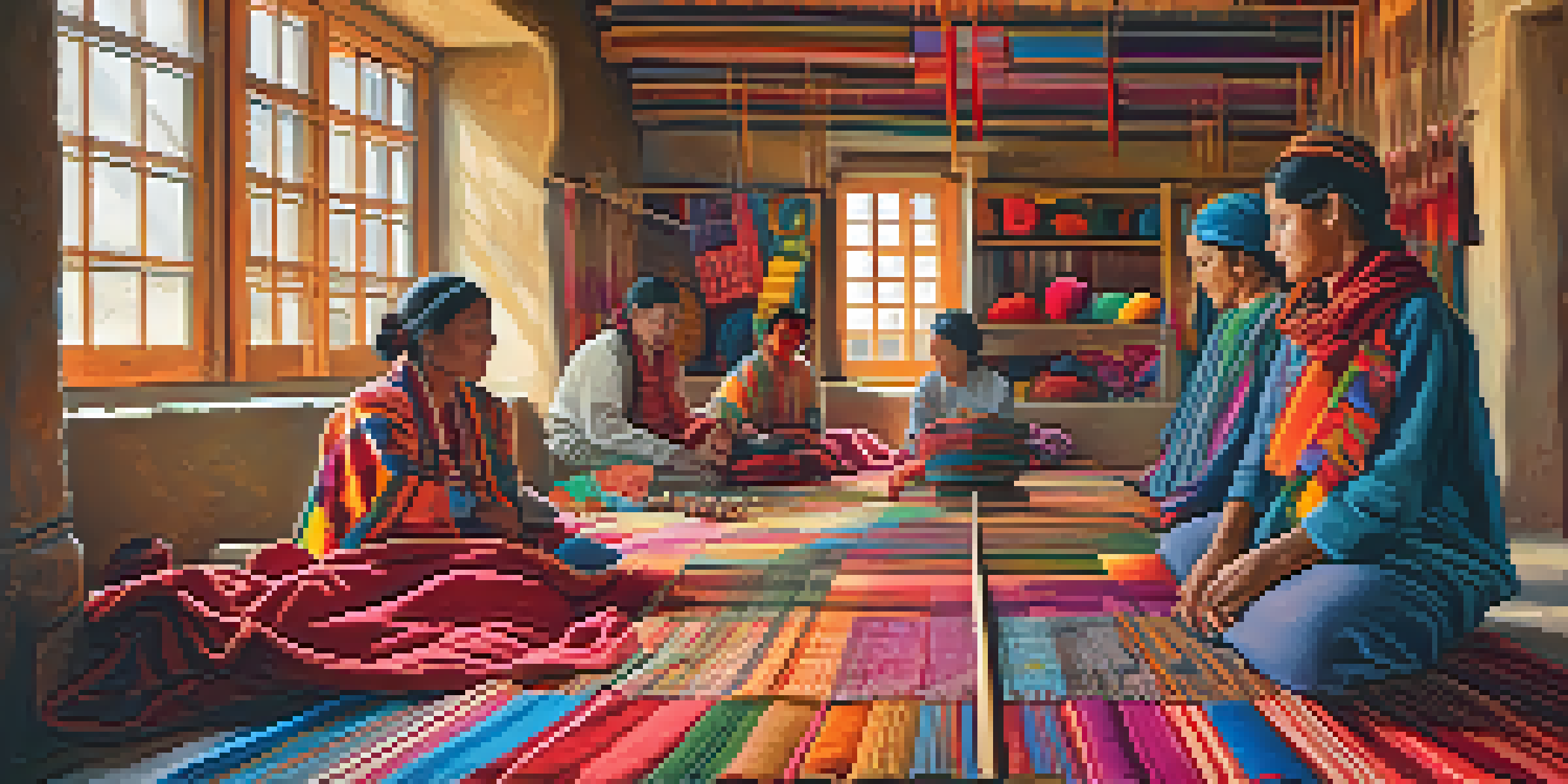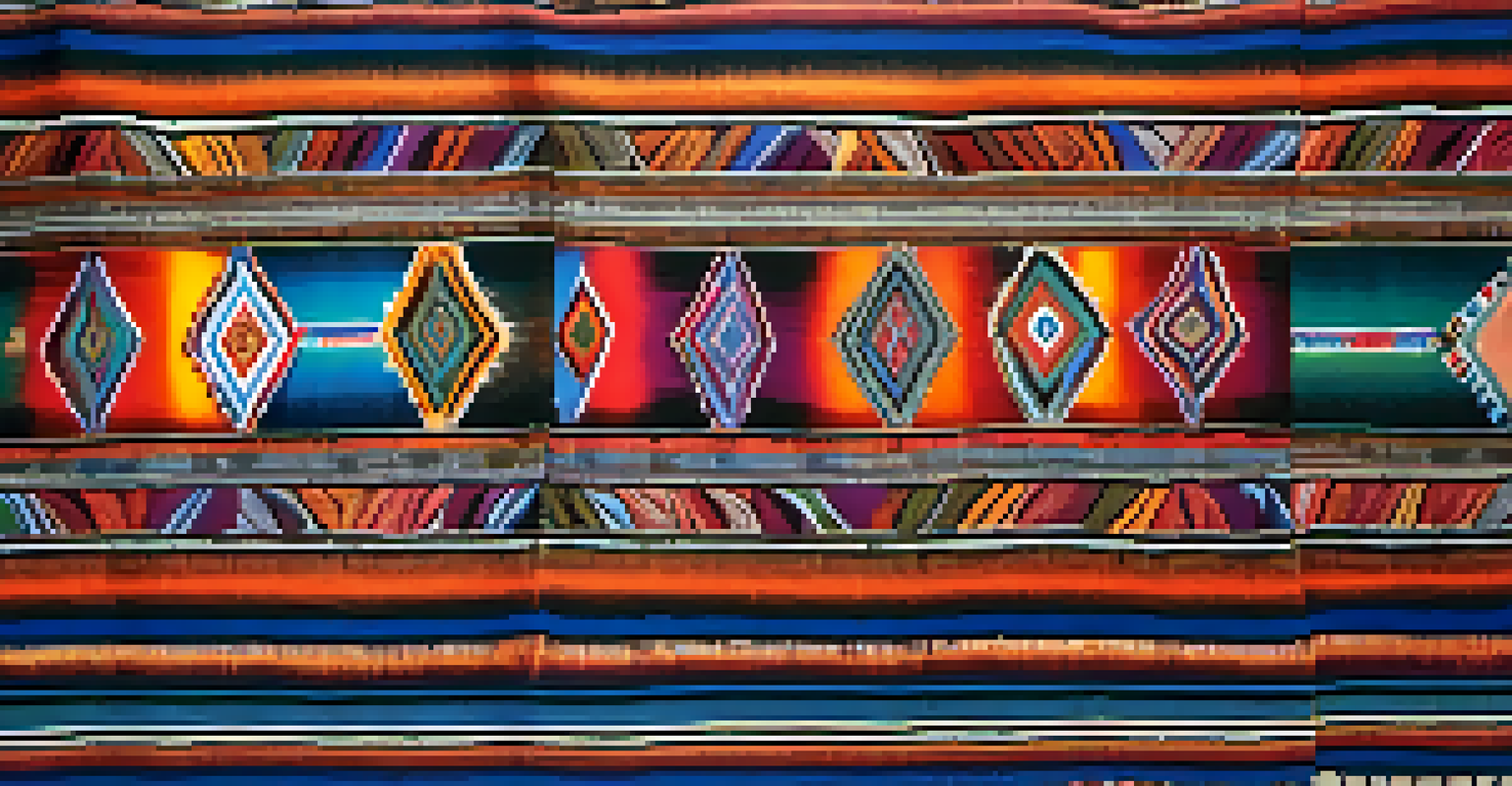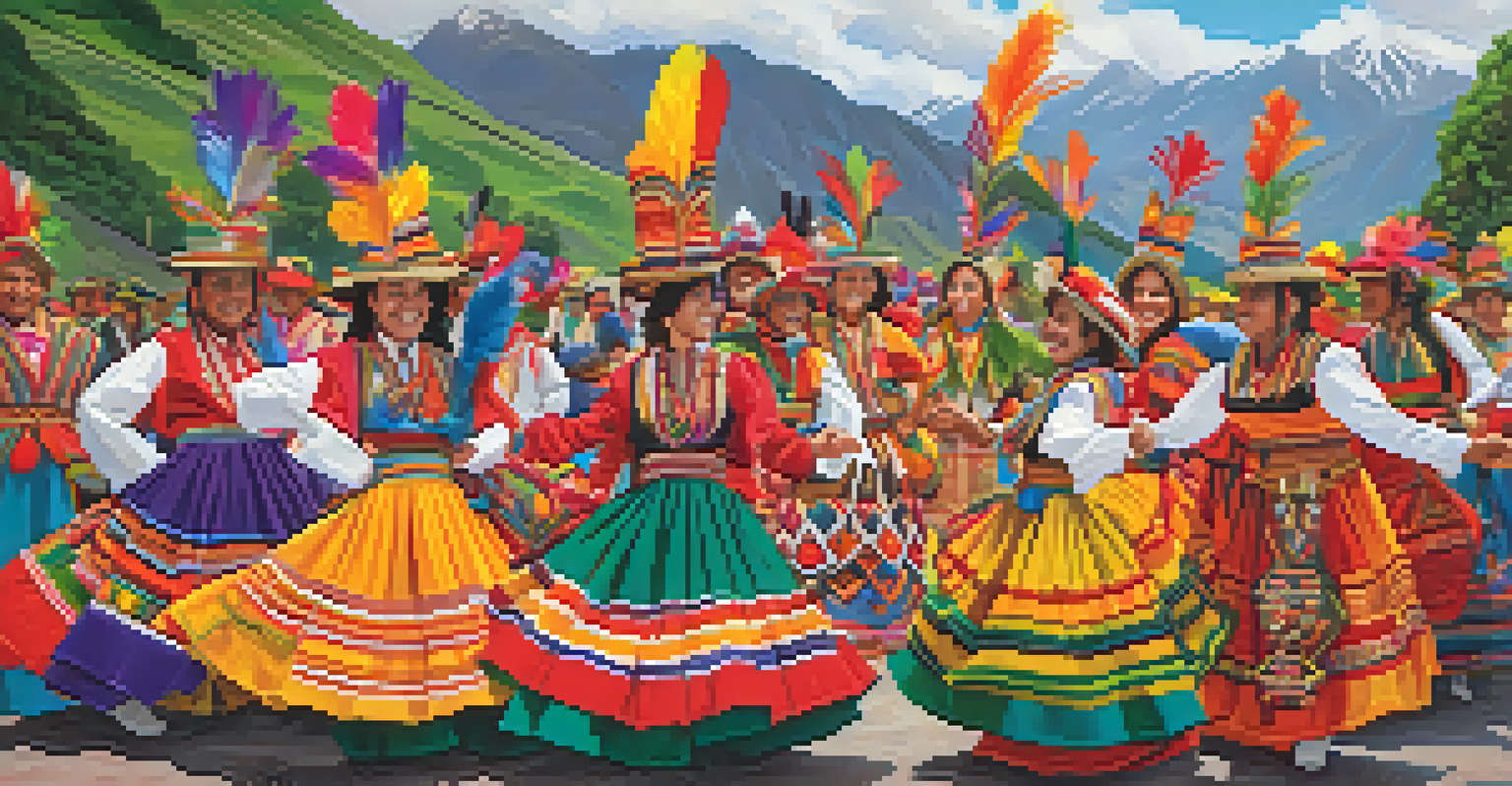Exploring the Rich History of Peruvian Textile Arts

The Origins of Peruvian Textile Arts
Peruvian textile arts have roots that stretch back thousands of years, dating back to ancient civilizations like the Paracas and Nazca. These early cultures used textiles not just for clothing but also for ceremonial purposes, showcasing their artistry and cultural significance. The intricate designs often told stories and represented the beliefs and customs of the people.
Textiles are a reflection of culture and identity, a language that transcends words.
As the Inca Empire rose to prominence, textiles became a symbol of wealth and status. The Incas developed advanced weaving techniques using materials such as alpaca wool and cotton, creating vibrant fabrics that wowed both locals and visitors. This period marked a pivotal moment in textile arts, as the techniques and motifs began to evolve into what we recognize today.
Even today, the legacy of these early artists is felt throughout Peru. Many indigenous communities continue to practice traditional weaving methods, ensuring that the rich history of their ancestors is not lost. This connection to the past is vital, as it keeps alive the stories and heritage embedded in each woven piece.
Materials Used in Peruvian Textiles
The materials used in Peruvian textiles are as diverse as the regions they come from. Alpaca wool is a standout choice, known for its softness and warmth, making it ideal for garments. This luxurious material has been harvested for centuries, and its significance is woven into the very fabric of Peruvian culture.

Cotton also plays a crucial role in textile production, particularly in the coastal regions. The cotton grown in Peru is often handpicked and dyed with natural pigments, resulting in vibrant colors that are both sustainable and unique. These dyes come from plants and minerals found in the surrounding environment, further connecting the textiles to their origins.
Rich History of Textile Arts
Peruvian textile arts have deep roots in ancient civilizations, evolving through the Inca Empire and continuing to be practiced by indigenous communities today.
Additionally, other materials like sheep wool and even synthetic fibers have found their way into modern Peruvian textiles. However, many artisans remain committed to traditional methods, using only natural materials to create pieces that honor their heritage while appealing to contemporary tastes.
Traditional Techniques in Weaving
Weaving in Peru is not just a craft; it's a time-honored tradition passed down through generations. One of the most iconic techniques is backstrap weaving, where the loom is attached to the weaver's body, allowing for greater control and precision. This method requires skill and patience, resulting in beautifully intricate patterns that reflect the weaver’s heritage.
The craft of weaving is not just a skill, but a way to tell stories and preserve heritage.
Another fascinating technique is the use of natural dyes, which involves extracting colors from plants, insects, and minerals. This practice not only enhances the visual appeal of the textiles but also ensures that the materials used are environmentally friendly. The vibrant hues produced are deeply symbolic, often representing elements of nature and cultural beliefs.
Artisans often incorporate symbolism and storytelling into their weaving, using motifs that represent local wildlife, mythology, and historical events. Each piece becomes a narrative tapestry, inviting viewers to appreciate the cultural significance behind the patterns. This storytelling aspect enriches the experience of owning or wearing a Peruvian textile.
The Role of Textiles in Peruvian Culture
Textiles in Peru are more than just functional items; they hold deep cultural significance. They are often used in rituals and celebrations, symbolizing identity and community. For instance, traditional garments worn during festivals showcase the rich diversity of Peru’s various indigenous groups, each with their own unique styles and meanings.
Moreover, textiles serve as a medium for storytelling and preserving history. Many weavers create pieces that depict significant events or legends from their culture, allowing them to pass down these stories to future generations. This practice helps maintain a sense of pride and connection to their roots, strengthening communal bonds.
Diverse Materials and Techniques
Artisans use a variety of natural materials like alpaca wool and cotton, employing traditional techniques such as backstrap weaving and natural dyeing to create unique textiles.
In contemporary society, Peruvian textiles have also found their place in the fashion industry, gaining recognition on global platforms. Designers are increasingly incorporating traditional elements into modern styles, bridging the gap between past and present. This fusion of old and new not only showcases the beauty of Peruvian textiles but also promotes cultural appreciation worldwide.
Regional Variations in Textile Arts
Peru is a country of diverse landscapes and cultures, and this variety is beautifully reflected in its textile arts. Each region boasts its own distinct styles and techniques, influenced by local traditions and available materials. The highlands, for example, are known for their intricate patterns and vibrant colors, often created using backstrap looms.
In contrast, coastal communities tend to favor cotton textiles, often featuring lighter designs suited for the warmer climate. The use of natural dyes is prevalent in both regions, but the color palettes and motifs can differ significantly. These regional variations add richness to the overall tapestry of Peruvian textile arts.
Additionally, many artisans draw inspiration from their surroundings, infusing elements of nature into their designs. For instance, motifs inspired by the Andes Mountains or the Amazon rainforest can be seen in various textiles, connecting the weaver to their environment. This sense of place is integral to the identity of Peruvian textiles, making each piece unique.
Challenges Facing Peruvian Textile Arts Today
Despite their rich history, Peruvian textile arts face several challenges in the modern world. One major issue is the globalization of fashion, which often prioritizes mass production over traditional craftsmanship. Many artisans struggle to compete with cheaper, machine-made alternatives, putting their livelihoods at risk.
Additionally, there is a growing concern about the preservation of traditional techniques and knowledge. As younger generations move to urban areas seeking better opportunities, the risk of losing these invaluable skills increases. This shift threatens the continuity of the cultural heritage embedded in textile arts.
Cultural Significance and Future
Textiles hold profound cultural significance in Peru, serving as mediums for storytelling, while their future depends on preserving traditional methods amidst modern challenges.
However, there are initiatives aimed at revitalizing interest in Peruvian textiles. Organizations and cooperatives are working to promote fair trade practices, ensuring that artisans receive fair compensation for their work. By raising awareness and encouraging appreciation for traditional crafts, there is hope for a sustainable future for Peruvian textile arts.
The Future of Peruvian Textile Arts
Looking ahead, the future of Peruvian textile arts is filled with potential. As awareness of the importance of sustainable and ethical fashion grows, there is greater appreciation for handmade textiles. Consumers are increasingly drawn to unique, artisanal products that tell a story, which bodes well for the future of traditional weaving.
Moreover, many artisans are embracing innovation while staying true to their roots. By integrating modern techniques and designs while preserving traditional methods, they can appeal to contemporary tastes without losing their cultural identity. This balance is crucial for ensuring the longevity of their craft.

Ultimately, the future of Peruvian textile arts depends on a collective effort to celebrate and support these artisans. By valuing their work and promoting their stories, we can help sustain this vibrant cultural heritage for generations to come. The journey of Peruvian textiles is far from over; it continues to evolve while remaining grounded in its rich history.